Nangun wruk: Our earth
This is an ancient continent; the lifeblood of hundreds of Nations each with their own languages, stories, and connection to land – nurtured through countless generations. Colonisation seeks to eradicate these Nations and any signposts of our existence. But colonists have failed, and the custodians remain. How do we walk a new path that makes our Countries and their stories visible?
Nangun wruk is a national place names project which aims to better involve language communities in the government naming processes in their regions. To achieve this goal, First Languages Australia is working at two levels.
Firstly, supporting the work that Aboriginal communities and Torres Strait Islander communities are doing in documenting and publishing place names and associated information. First Languages Australia invites language communities to identify the place names they would like recognised and submit them to Gambay’s place name page. The map highlights the preferred geographical name/s and identify a community point of contact for the appropriate use of that name in the region. Developing and maintaining the map is an ongoing project to be promoted as a reference tool for local councils, schools, parks and wildlife, and tourism ventures.
https://gambay.com.au/placenames/
Secondly, First Languages Australlia is working with the Australia and New Zealand Working Group on Place Names, Place Names Australia and other relevant agencies to promote the appropriate use of Aboriginal place names and Torres Strait Islander place names throughout Australia. Where possible, the meanings of these place names will be included on signage.
Support from local agencies and cultural involvement from communities is crucial to the outcomes. These include developing a set of guidelines with local government agencies and federal and state tourism authorities regarding:
the inclusion of traditional place names information in shire and tourism publications
providing support to local place name committees responsible for defining meanings of current place names and recommending changes and additions
changes to signage to reflect the new information
encouragement for the use of this material on roadside information boards, and historical markers, where appropriate
consideration of local Aboriginal organisations and Torres Strait Islander organisations as contractors for the design, construction, and erection of new signage and changes to old signs
exploratory place names projects designed and distributed to schools to encourage young Australians to see place names as an exciting and unique part of their identity
employment of local Aboriginal and Torres Strait Islanders in the project.
Download the First Languages Aboriginal and Torres Strait Islander Place Names Position Statement (1.7 MB)
As the naming and renaming of significant places increases, there will be an increasing need for the local cultural knowledge of Aboriginal people and Torres Strait Islander people. This will lead to further employment opportunities in industries such as tourism, local government, and state government departments such as Lands, Main Roads, Fisheries, Parks and Wildlife.


